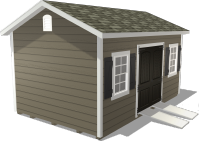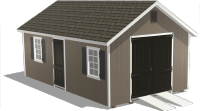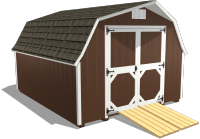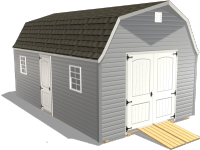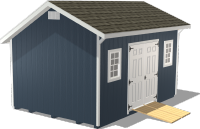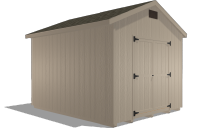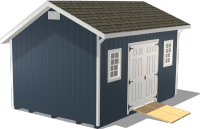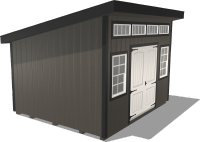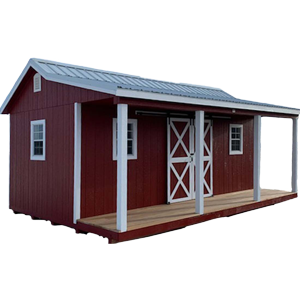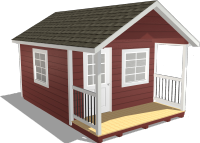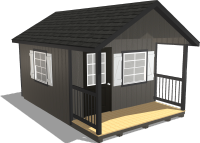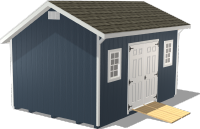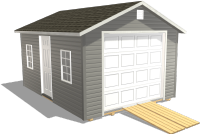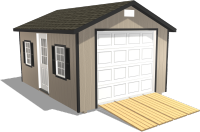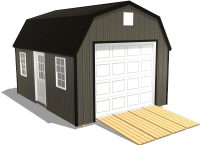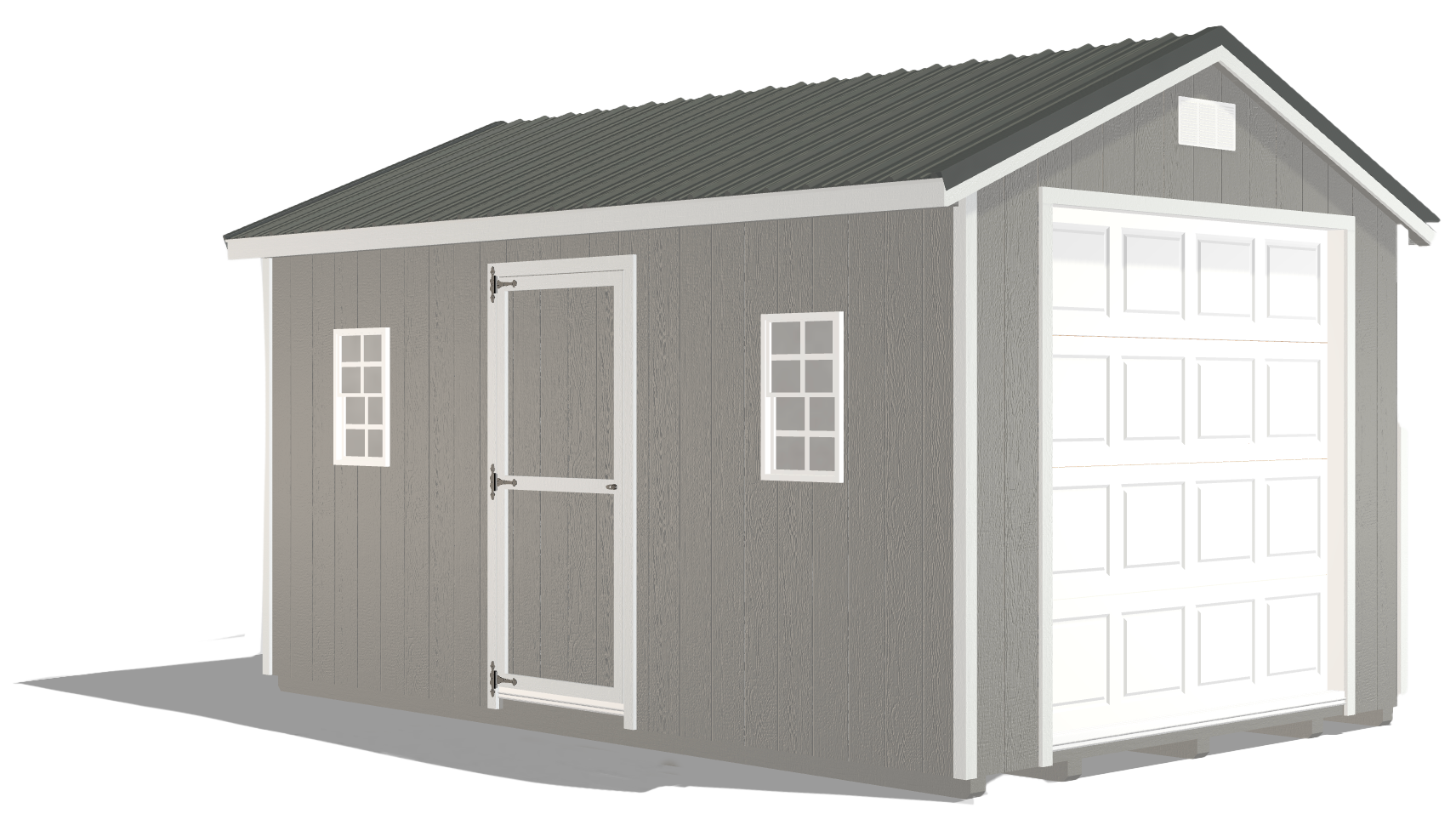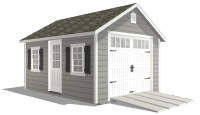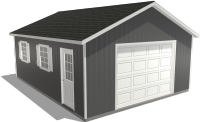Shed Placement Made Easy: How to Choose the Right Spot
by Dakota Storage Buildings, on June 30, 2025
Choosing a new shed is an exciting opportunity to add functional storage, boost your property’s curb appeal, and even create a personalized workspace. With so many customization options, like size, style, color, and interior features, it’s easy to get swept up in the design process.
But while features and finishes matter, shed placement is one of the most important and often overlooked decisions you’ll make. Where you put your backyard shed affects how you use it, how long it lasts, and how easily you can maintain it over time.
Let’s walk through 6 essential shed placement tips and considerations, covering everything from function and accessibility to permitting, weather exposure, and long-term durability. Whether you’re leaning towards a pre-built or custom shed, these insights will help you avoid common mistakes and choose the best location for shed organization.
6 Questions to Ask to Determine the Best Shed Placement in Your Yard

1. How Will You Use Your New Shed?
One of the most important factors to consider when determining shed placement is how you plan to use your shed. Function should be a top priority, because different uses call for different placements.
Will You Use Your Shed to Store Tools and Equipment?
Depending on the type of tools and equipment you’ll be storing, you may want to consider how far you’ll need to walk to retrieve or return those items during use.
For example, if you plan on storing landscaping or home improvement tools, you’ll want to place the shed as close as possible to the garden, yard, or project work zone. This is especially important if you’re dealing with particularly heavy or unwieldy tools.
Will You Use Your Shed as a Hobby or Workspace?
If your backyard shed will serve as a workshop, potting shed, or craft space, take into account natural light, noise, and privacy. A location that gets ample sunlight can improve visibility and reduce the need for artificial lighting.
If you prefer a quiet space to focus, consider placing your shed further from high-traffic areas of your yard or home.
Will You Need Drive-up Access to Your Shed?
If you’ll be loading or unloading heavy equipment, placing your shed at the end of a driveway or gravel path makes access much easier. This setup allows you to drive vehicles or equipment directly up to the shed.
You should also consider the distance from your shed to the property line to ensure you have adequate clearance and don’t encroach on neighboring properties.
By aligning your shed’s location with its intended function, you’ll create a more efficient, enjoyable, and accessible space.
2. Do You Need to Obtain a Permit?
Depending on where you reside, you will likely need to acquire a building permit before placing your shed. Your local regulatory authority will be able to provide you with all of the information needed to determine the proper permitting process for installing or building a shed on your property.
While some locations only require permits for larger sheds (typically over 100 square feet), many municipalities require permits regardless of the structure’s size. Be sure to also check for any local zoning laws that might restrict shed height, placement near property lines, or usage.
If you live in a community with a homeowner’s association (HOA), review their design rules, which may regulate your backyard shed’s color, roofline, visibility from the street, or proximity to other structures.
To avoid frustration and unexpected expenses, make sure you have the final stamp of approval from your local permitting office and any relevant HOAs before finalizing your shed organization purchase.
Pro Tip: Always research permit and design requirements before purchasing your shed, not after. This step can help you avoid costly changes, project delays, or the possibility of having to move or modify your shed after it’s installed.
3. What Limitations Will You Need to Work Around?
After speaking with your local regulatory agency and obtaining the necessary permits, take time to thoroughly review the restrictions and limitations associated with your property. These rules may come from city ordinances, county codes, or HOA guidelines, and understanding them early will help you avoid costly setbacks.

Let’s take a look at some of the most common limitations that may impact your shed placement:
Shed Placement from Property Lines and Setbacks
This is one of the most frequent restrictions included in building permits. Most local codes dictate how close your shed can be to your property line, as well as its proximity to other structures (such as fences, garages, or your home).
These requirements often vary based on the height and footprint of your shed. Larger structures or those that rise above a fence line may face stricter regulations. Be sure to measure carefully and account for overhangs like eaves or gutters, which may affect setback compliance.
Use-Specific Requirements
The intended use of your shed can also influence where you’re allowed to place it. If your backyard shed will be used as a workshop, hobby space, or include electricity or plumbing, additional clearance may be required from other buildings or lot boundaries.
Structures with utilities may fall under different zoning rules and often require increased distance from neighboring properties for safety and access reasons.
Shed Aesthetics and Visibility
In some locations, particularly in HOA-governed neighborhoods or highly visible yards, you may face restrictions based on the appearance of your shed.
The closer your shed is to a property line or public sidewalk, the more likely you’ll be subject to rules about color, roof style, or materials to maintain neighborhood cohesion. Be sure to confirm if exterior finishes need to match your home or meet any visibility guidelines.
Environmental Exposure: Wind, Snow, and Sunlight
Beyond code requirements, consider natural elements that could affect your shed’s longevity and usability.

- Wind Exposure: Avoid open, wind-prone areas that could increase wear or make doors difficult to use.
- Snow Loads: Don’t place your shed in spots where drifting snow or heavy accumulation from your roof could pile up.
- Flooding: Stay away from low-lying areas that may flood during heavy rain.
- Sunlight: Consider orientation. Sunlight can be a benefit for workshop sheds, but it may also heat up your interior if it’s not well ventilated.
By factoring in these physical and regulatory limitations, you’ll ensure your shed placement is both compliant and practical, helping you enjoy your space for years without needing to make costly adjustments.
4. How Easy (or Challenging) Will Your Installation Be?
Now that you have all of your permits in place, it’s time to consider the actual installation or construction process of your new backyard shed.
The method you choose, whether it’s a DIY kit, a contractor-built structure, or a pre-assembled shed delivered ready to place, will influence your placement decisions and preparation needs.
Will you have your shed built on site by a contractor?
On-site builds require ample workspace for tools, materials, and safe construction. You'll need to consider your property’s layout to ensure there’s enough clearance between structures, fences, or neighboring lots to accommodate ladders and lots of movement.
Will you be constructing the shed yourself from a DIY kit?
A DIY build also needs room to spread out parts and work safely. Be sure to assess:
- Whether there’s a flat, stable area for staging
- If tools and materials can be safely stored during a multi-day build
- How close the work area is to your home or driveway for convenience
Will your shed be pre-assembled and delivered fully intact?
Pre-built shed delivery requires careful attention to site access. You'll need to ensure the delivery truck can reach your shed placement location without needing to drive over neighboring properties.
4 Additional Access Considerations
- Slope: Avoid steep or uneven ground that could complicate setup or cause structural issues.
- Entry Gates: Make sure gates or fence openings are wide enough for materials or the shed itself to pass through.
- Tree Clearance: Trim back low branches that could block equipment or create hazards.
- Neighbor Proximity: Be mindful of fences, driveways, or shared property lines that could restrict equipment access or staging.
Pro Tip: Plan your installation when the ground is firm and dry. Avoid overly soft or muddy soil, which can complicate leveling, create ruts from delivery vehicles, or delay construction altogether.
5. How Will Your Shed Fit Into the Existing Landscape?
Take time to consider how your final shed placement will fit into your yard’s landscape and terrain. This goes beyond cosmetic preferences, though aesthetics do matter, and touches on long-term function and structural integrity.

Of course, you want your shed to look great in your yard, but placement should also be mindful of the natural elements around it.
For instance, avoid placing your backyard shed too close to large trees with overhanging limbs or expansive root systems. Branches can fall and damage the roof, while roots may interfere with leveling or foundation stability over time. Shrubs or dense vegetation growing too close can also trap moisture and limit airflow around the shed.
You’ll also need to consider drainage from the roof and the surrounding area.
- Avoid low spots where water tends to collect. These areas can lead to soggy floors, mold, or even structural shifting.
- Instead, consider installing your shed on a gravel pad or raised foundation, which promotes proper drainage and extends the life of your shed.
In terms of design, think about visual cohesion with the rest of your property. Aim to align your shed’s style, color, and roofline with your home or existing outdoor features like fences, patios, or landscaping. This creates a more intentional, attractive setup that blends well with your surroundings instead of standing out awkwardly.
Choosing the right place for shed organizaton performs better over time, complements your landscape, and adds lasting curb appeal to your property.
6. How Accessible Will Your Shed Be Year-Round?
When choosing a location for your shed, it's easy to focus on how convenient it feels during warm-weather months, but year-round accessibility is just as important. Whether you're storing garden tools, outdoor gear, or seasonal equipment, your backyard shed should be easy to reach and use no matter the time of year.

Start by planning a clear entry path. Installing a simple gravel walkway, stepping stones, or pavers can create a reliable route to your shed that prevents mud, erosion, or trampled grass. These materials also help define the space and keep foot traffic off your lawn, especially after rain or during the spring thaw.
If you live in a colder climate, consider snow removal needs. Ask yourself: Will you need to shovel a path after heavy snowfall? Is the route wide enough for a snow blower if necessary? Planning for this now will save you frustration when the temperatures drop. Placing your shed closer to your home or driveway can also reduce the time and effort needed to reach it in icy conditions.
Lighting is another key factor. If you'll need access to your shed early in the morning or later in the evening, consider installing solar-powered path lights or a motion-activated fixture near the door. A little added visibility can make your shed organization safer and more functional in all seasons.
Finally, think about the size and design of the entrance. If you’re moving large items like lawnmowers, snow blowers, or wheelbarrows in and out, a wider door or built-in ramp can make a big difference. Avoid placing the shed in tight corners or behind fencing that could limit maneuverability.
By planning for accessibility in all conditions, you’ll ensure that your backyard shed serves you well every month of the year, not just when the weather’s nice.
The Right Shed Placement Makes All the Difference
Shed placement is a decision that affects functionality, longevity, aesthetics, and ease of use. By thinking through how you’ll use your shed, understanding local permit requirements, and factoring in drainage, access, and environmental conditions, you’ll avoid costly mistakes and create a setup that truly supports your lifestyle.
Take the time to evaluate your property’s layout and limitations before committing to a location. Choosing the right place for shed organization will be easier to maintain, more enjoyable to use, and a better fit for your daily routines.
Ready to get started? Browse our collection of durable pre-built sheds to find the perfect option for your space.



